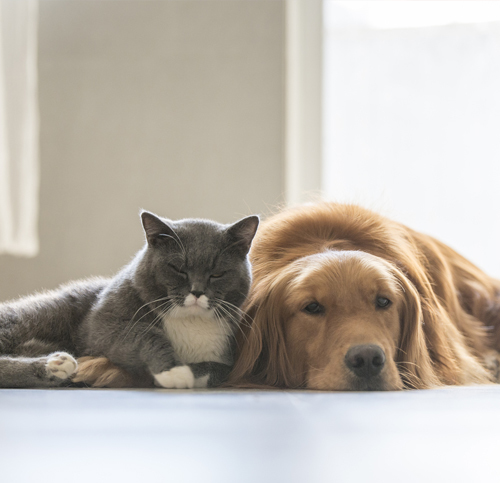|
|

Tag
While some cats can live peacefully alongside dogs, other cats simply cannot stand them. Where some felines are able to make the adjustment to life with dogs, others can only tolerate certain kinds of canines, or particular kinds of canine behavior. Cats and dogs are so different from one another that having both in the same household can be a challenge — but on the other end of the spectrum, sometimes can lead to a lifetime of friendship. These drastically different outcomes depend entirely on the situations of individual animals and involve their personalities, mannerisms, and personal preferences.
Basic Generalizations
Typically, the younger the animal, the more easily it will be able to adapt to changes. This applies to both cats and dogs. Kittens are more likely to get along with dogs than older cats introduced to them later in life. The same applies to puppies, but generally dogs are more accepting of cats at any stage in life whereas older cats tend to be less adaptive.
Understanding Behavioral Reactions
A key element to having dogs and cats together in the same household is understanding their different behavioral tendencies. It is important to know when a cat is angry or a dog has had enough. Body language tells all — when a cat is displeased or upset it will pin its ears, swish its tail back and forth, and oftentimes hiss. A dog is more prone to showing aggression towards cats than fear and must be monitored for signs of impending attack. Angry dogs are easy to identify — they will bark, growl, or otherwise viciously act towards the offending feline. A dog’s fixation upon the cat, similar to how a predator would stalk its prey, is the primary sign of an interaction going wry. In this scenario, the dog should be removed immediately from the cat’s presence.

Introducing Dogs and Cats
There are multiple methods that can be implemented in order to begin an introduction between a feline and a canine. Desensitization is a common approach that works well on account of the slow speed of the process. This method is especially applicable in cases where the dog may show initial predatory tendencies towards a feline.
The process involves initially restricting your cat to a specific living space that the dog does not usually occupy and enacting a physical barrier between them that simply allows for visual contact. A tall baby gate works well but make sure your cat cannot cross the barrier and that they are comfortable in their designated space. Go through normal daily routines with both your cat and your dog on opposite sides of the barrier, allowing the other full view of these activities. Over time, the animals should become accustomed to one another, and once they have visually accepted each other’s presences, they will be ready to move on to physical introductions.
First Meetings
The first time a dog and cat are introduced to each other face-to-face should be a staged interaction involving a person restraining the dog on a leash and the cat being left free within a confined space. You should be physically capable of removing the dog from the cat’s presence if necessary and yet also occupy a large enough space that your cat is able to get away too if they desire. Again, being able to read body language here is the key to success. If the dog is calm around the cat and the cat is not displaying any adverse behavioral reactions, they should be allowed to investigate each other freely, keeping the dog on a leash but giving them enough length to move around. This process should be repeated multiple times in different environments around the house before the animals are allowed unsupervised interaction.
Last Resorts
If either the cat or the dog is incapable of accepting each other’s presences, more structured training can be implemented. Distracting your dog from predatory fixation can be accomplished through repetitive processes involving listening to a string of commands or simple play routines. In difficult scenarios, a behavioral expert can be brought in to help ease the adjustment. In worst case scenarios, the cat and dog may not be able to coexist, and they will need to be kept apart.
Tag
Tag